The Art of Science—Versailles at the Science Museum, London
Have you ever wondered how it would feel to witness the grandeur and opulence of the 18th-century French court? Then you might want to go to London.
Edoardo Cesarino 19 December 2024
Phaidon’s Vitamin C+ Collage in Contemporary Art is the latest addition in the Vitamin series and will introduce you to everything you need to know about collage art.
If you have ever overlooked collage and considered it as a lesser art medium or a refined form of craft, Phaidon’s new Vitamin C+ Collage in Contemporary Art is a definitive book that will completely change your mind.
Entirely dedicated to the art of collage, considered on a broader level as a technique mixing different images, both physically and digitally, still or moving, the book comprises over 100 international artists. The artworks were nominated by an esteemed panel of museum directors, curators, critics, and collectors, that will introduce you to the many different expressions of this medium.
The Vitamin series by Phaidon, originally launched in 2002, so far has analyzed different techniques, from painting, drawing, and photography, to sculpture and installation. For each medium it offers a complete survey and an overview of current practices. Now in its second decade, the series continues to grow with the first volume devoted to the collage technique, curated by Yuval Etgar.
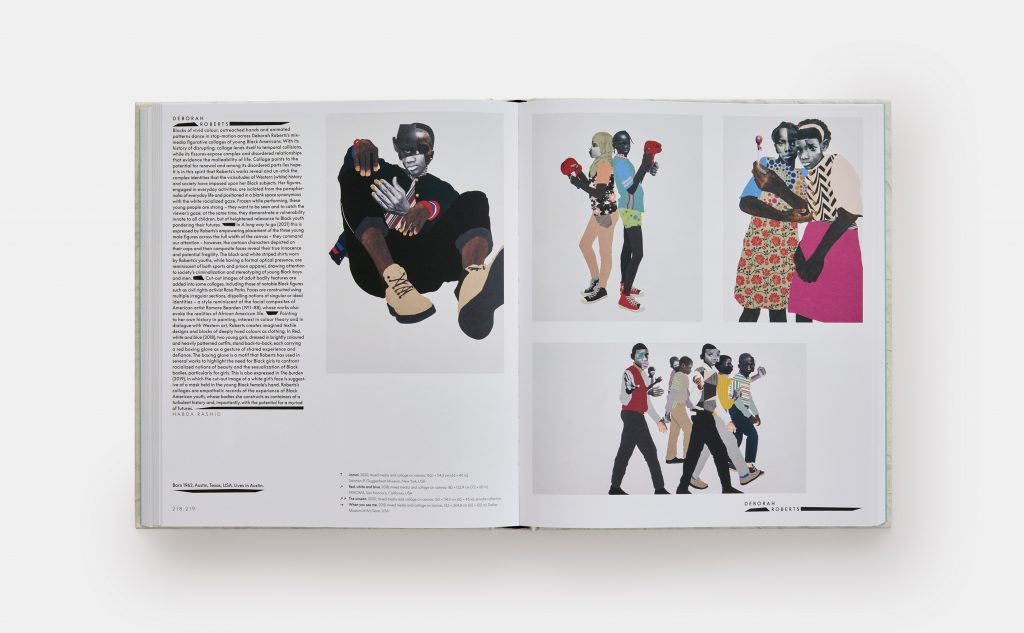
Vitamin C+ Collage in Contemporary Art. Introductory essay by Yuval Etgar. Phaidon. Deborah Roberts (pages 218-219). Courtesy of the publisher.
Much like Vitamin T: Threads and Textiles in Contemporary Art, this new volume focuses on a process that has long been declassified as craft rather than fine art. It tries to demonstrate not only collage’s significance throughout art history, especially over the past century, but also how it is now more lively than ever.
As author Yuval Etgar says in the book introduction:
Collage, as it turns out, is a synonym for trouble. It is a term tainted by a long history of illicit acts: cutting, tearing, stealing, covering up, pretending and, above all, disrupting all expectations that things can be whole, and perfect, in one piece.
Vitamin C+ Collage in Contemporary Art, introduction

Martha Rosler, Invasion, 2008, from the series ‘House Beautiful: Bringing the War Home, New Series’, (2004–8). Picture credit: © Martha Rosler. Courtesy the artist and Mitchell-Innes & Nash, New York (page 223, bottom) Photomontage, dimensions variable.
The book, just as aesthetically beautiful as conceptually appealing, is more than just a catalogue gathering together artists working with the same medium. In fact, it opens with a long preface that narrates the history of collage as a medium. It then goes on to analyze the work of the most prominent living artists working with collage in various forms, offering a complete overview of everything we can consider collage nowadays. The book presents the best and newest innovations in this technique.
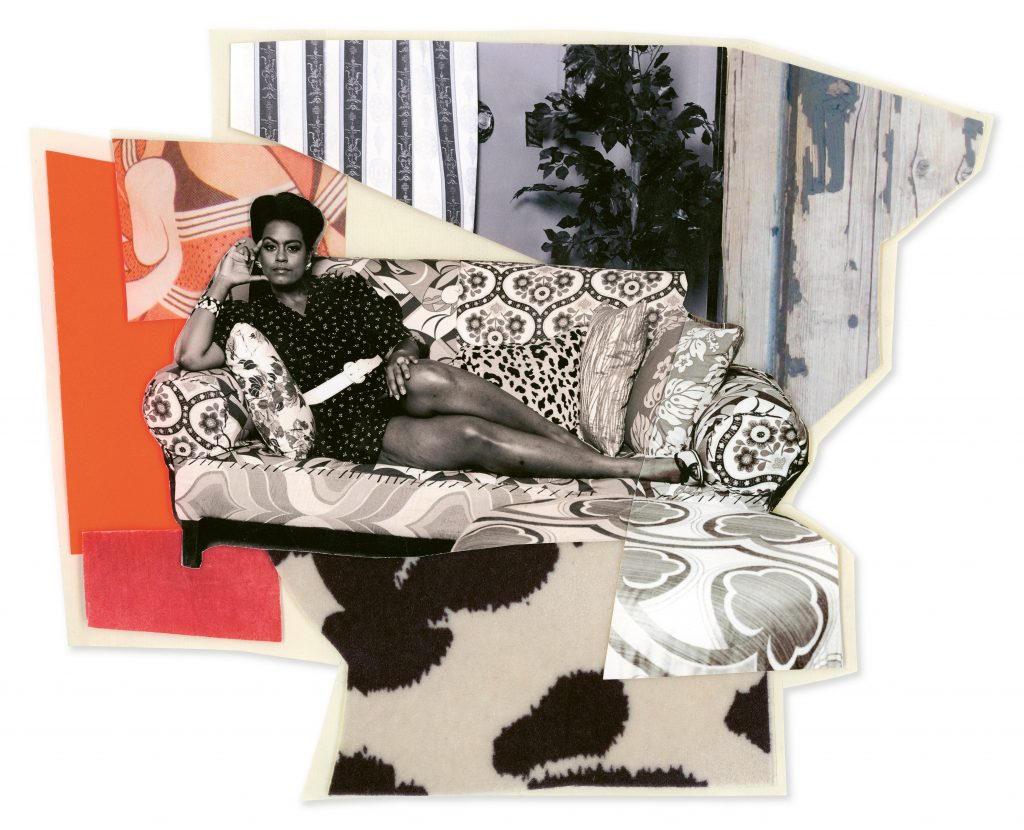
Mickalene Thomas, Clarivel Face Forward Gazing, 2020.
Picture credit: © Mickalene Thomas (page 269, bottom). Color photograph and mixed-media paper, 22.9 × 28.6 cm (9 × 11 1/4 in).
The primary questions the book poses are; what can be considered a collage? What are the minimum elements that constitute a collage? And, on the contrary, when does a collage become an assemblage or an installation? Trying to answer these questions, Etgar presents different approaches and examples, ranging from Picasso and Braque and their Cubist collages and assemblages, to Kurt Schwitters’ Merzbau, from Surrealist collages to the performative practice of the décollagists, whose tearing and destroying of paper elements – such as posters and billboards – introduced a political element to the collage practice.
Closer to the present, Etgar analyzes the work of artists working with different types of collages, such as montages and photomontages, as well as digitally produced collages.
At the very core of this technique, however, the author recognized two recurring elements, as he states in his introduction:
Collage must have more than one element in order to be regarded as such, even if one of these elements is nothing more than a background or a neutral support, or if the elements have been processed to form a seamless composition by way of printing or digital retouching. This inevitable reliance on conjunction of distinct parts easily lends itself to political interpretation as a method that expresses difference, friction or kinship between foreign bodies.
Vitamin C+ Collage in Contemporary Art, Introduction
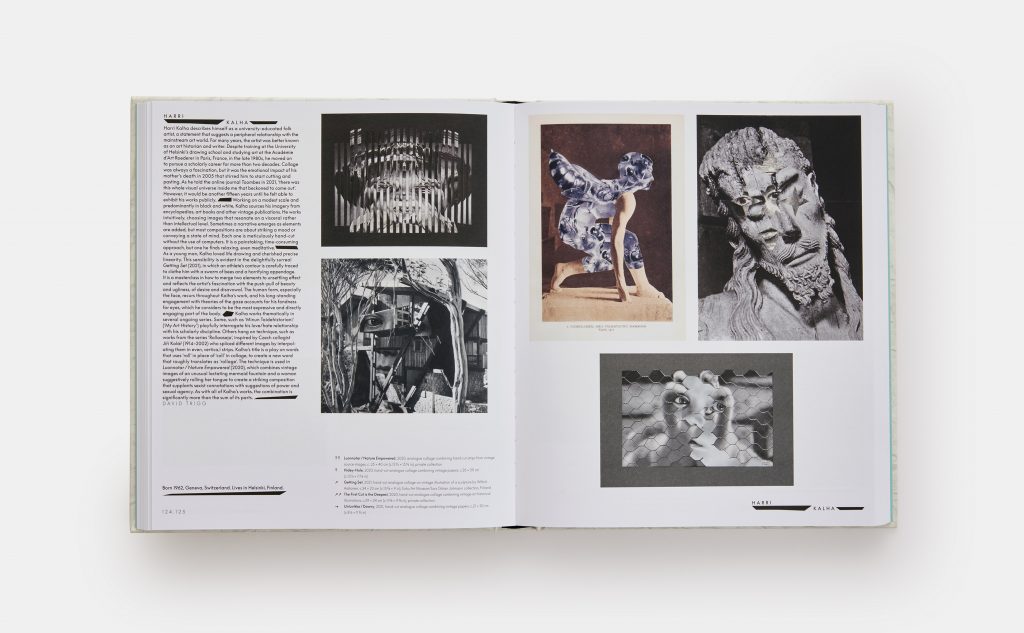
Vitamin C+ Collage in Contemporary Art. Introductory essay by Yuval Etgar. Phaidon. Harri Kalha (pages 124-125). Courtesy of the publisher.
The long introduction painted by Yuval Etgar serves as a backdrop to introduce each of the 108 artists presented in the book, giving each one a detailed article featuring information, themes, and images of their work.
Despite the artists not being grouped together in any specific order, flipping through the book one can easily understand the criteria that lead the panel of experts in their choice. The artists, coming from over 40 countries, are representative of different generations, as well as different backgrounds and cultures.
The book features the work of real contemporary pioneers in the art of collage, such as Linder, Christian Marclay, Wangechi Mutu, John Stezaker, Mickalene Thomas, and Kara Walker, as well as that of mid-career artists and representatives of a younger generation, working with both physical and digital collages.
Despite the variety of ages, backgrounds, and practices, the book is still very cohesive, thanks to the sleek graphics and high quality of the images presented.
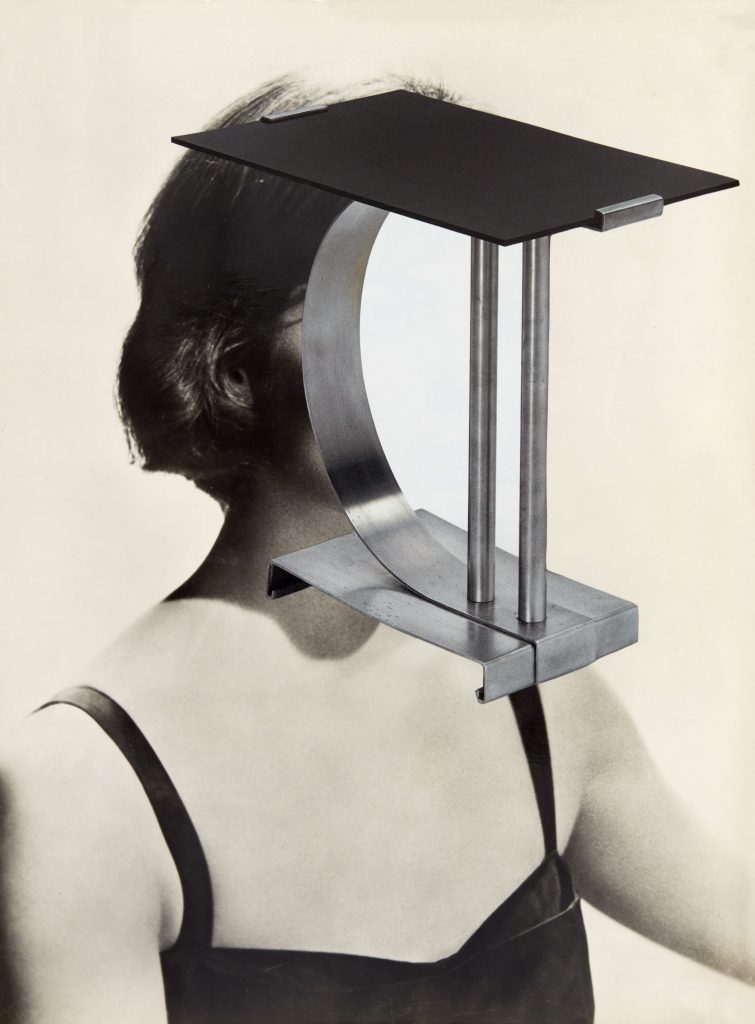
Linder, Mayniel Relief, 2017. Courtesy the artist, Modern Art, London, dépendance Brussels and Blum & Poe, Los Angeles (page 152). Photomontage, 22.7 × 16.8 cm (9 × 6 5/8 in).
Despite working with the same, rather old, materials that have long been used for collages (paper and glue) or with radically new ones, collage artists today are inspired by a very specific, although far-reaching, set of themes. Throughout the book, the author does a great job of pinpointing all the recurring themes that the featured artists present.
There are some that are closely related to the medium itself and how it plays with images and ephemera, salvaging them from perpetual oblivion and reflecting on the limits of image-based media. Other artists are more concerned with aesthetics and how tthey can come into play when working on a collage piece. This is seen in the mixing of colors and shapes, but also in patterns and textures used to create pieces that are ultimately multidimensional, or possess a tactile aspect in their bi-dimensional nature.

Julien Pacaud, Authorized Perimeter, 2020. Picture credit: (page 193). Digital collage printed on 310 gsm fine art paper, 42 × 30 cm (16 1/2 × 11 3/4 in).
On the other hand, there are also more traditional themes. These include memory, family, or community, and elements that are more closely linked to social and political discourses, which, through collage, can find new means of expression. Some artists reflect on gender or racial inequalities, others on representation and social justice; there are artists concerned with climate change and environment-related issues, as well as artists dealing with war and violence.
Whether dealing with subjective memory and identity, social issues, or the specificities of the medium itself, Vitamin C+ is ultimately a reflection on borders and margins, and how those come into play in today’s art, both from a conceptual and a practical standpoint. Analyzing the idea of a border, what is inside said border and what is on the outside, and what significance a margin can have, Vitamin C+ succeeds in narrating today’s art through the lens of a very specific medium, collage.
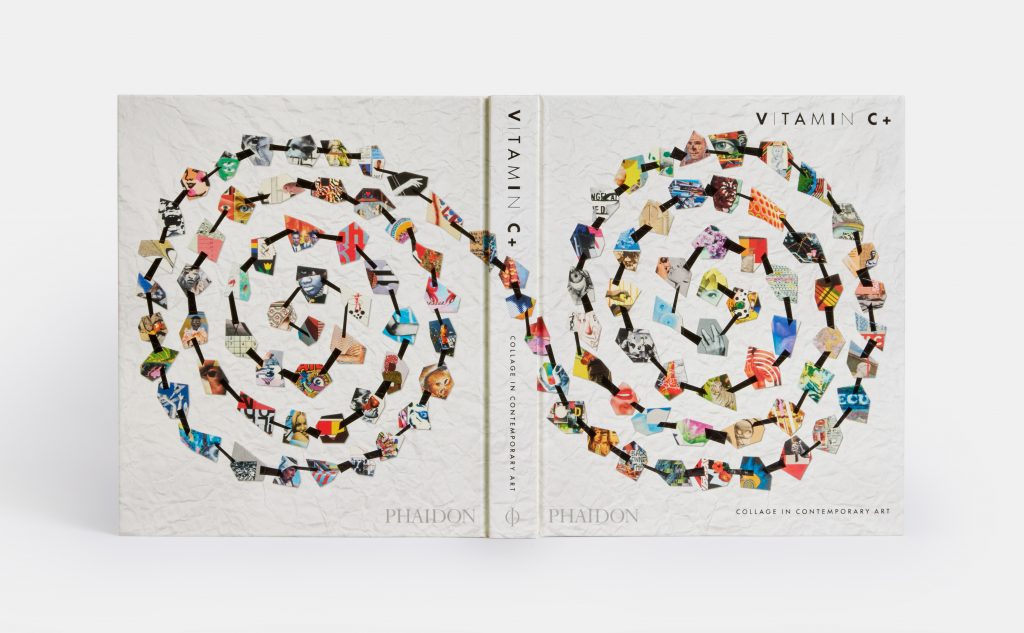
Vitamin C+: Collage in Contemporary Art. Introductory essay by Yuval Etgar. Phaidon 2023. Courtesy of the publisher.
About the author
Yuval Etgar is a curator and art historian who specializes in the history and theory of collage and image appropriation. His curated and published work includes The Ends of Collage, an anthology of writings on the history and theory of this practice, as well as monographic projects dedicated to the work of Louise Nevelson, Jake Chapman, John Stezaker, Fischli & Weiss, and René Magritte, among others.
You can purchase Vitamin C+ on the publisher’s website.
DailyArt Magazine needs your support. Every contribution, however big or small, is very valuable for our future. Thanks to it, we will be able to sustain and grow the Magazine. Thank you for your help!